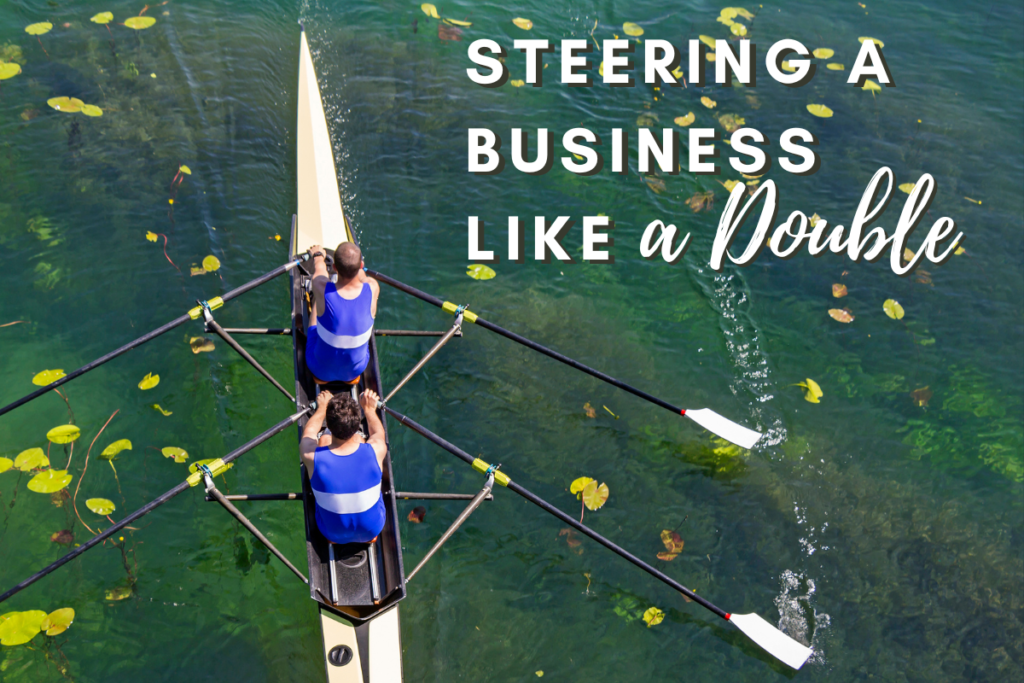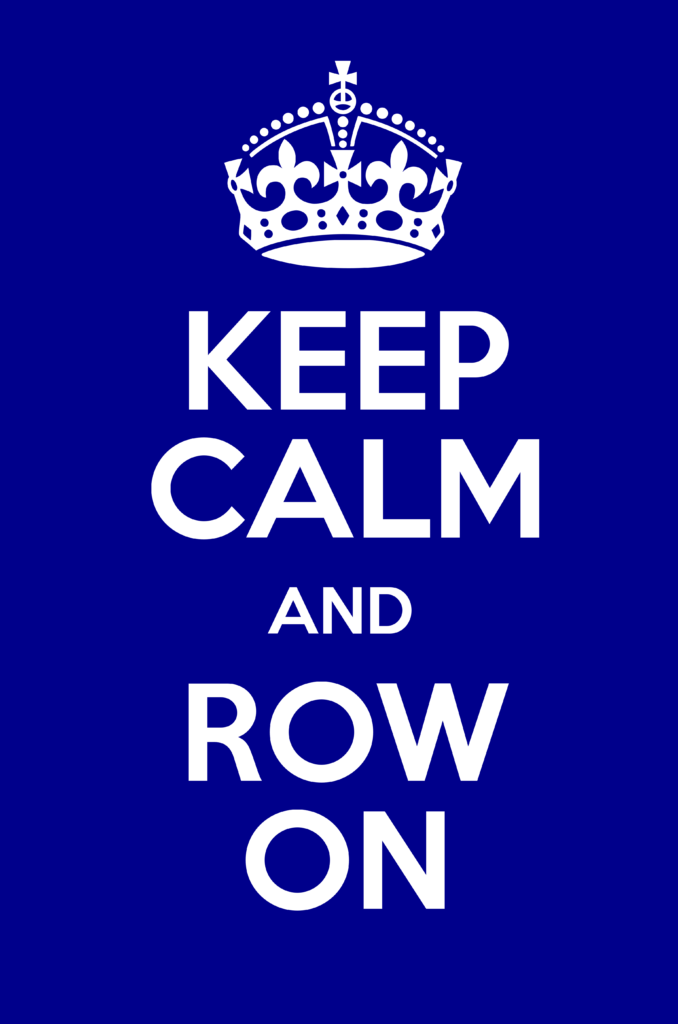
Steering a Business like a Double
Do you remember those motivational posters, intended to inspire teams to work in unison, showing an eight rowing into a golden sunrise or sunset? For businesses, rowing is a useful and frequently used analogy. I drew upon this when learning how to set up and row my SUP rower a few years ago. So why not think about steering a business like steering a rowing shell along a river?
I most commonly row a double. My doubles partner and I alternate stroke seat and bow seat with each outing. There are skills and benefits to each position in the boat. When stroking, the pleasure is in maintaining a perfect and consistent rate, creating a Zen of fluidity and run. Or the satisfaction of knowing by feel alone (and a check glance at the StrokeCoach) that you have taken the rate from 24 exactly up to 26. If I had to choose, it might be bow seat. There is something pleasing about finding and holding a perfect line to efficiently navigate the bends of the river with minimal disruption to the workout and the progress of the boat.

Steering a Double
Keep in mind that rowers sit backwards in the shell. The double is a sculling shell, each rower having an oar in each hand. Stroke sits in the stern of the boat and sets the rate, while bow faces her back and is in charge of the boat and responsible for steering. Sounds simple and with experience it is. Many elements contribute to good steering of a double.
- Each day is similar, yet every day is different. Wind and current, especially in combination, alter the water and the nature of the water effects the quality of the row and the steering.
- Familiar things can seem very different when water levels are higher or lower. The banks also erode over time, or trees fall into the water, or buoys for the kayakers also training on the river can be moved, creating unexpected obstacles to steer around.
- The double we row has a fixed fin. Steering adjustments are made by rowing harder or more lightly on one oar or the other.
- In our boat, communication is important. For some crew boats, especially a double, bow may just make steering adjustments by herself. However, turning with one person is not as efficient as with two, and stroke will always feel that something is going on.
- Bow makes a judgement about what is needed (“two on port”), calls it at the right moment so both rowers can execute, then checks to see if it had the desired effect, and if necessary, corrects (“one more”).
- Sometimes just a “tap on port” is all that is needed, not a full hard stroke on port.
- All this takes place while continuing to row, exactly following stroke.
- Calculations are made rapidly, after only a quick glance, usually over your left shoulder.
- Left shoulder checks are most frequent because of the pattern of travel, rowing upstream from the boathouse closest bank on the starboard side. But right shoulder checks are needed occasionally, to confirm that no one is rowing on the wrong side or that you are not overtaking an unsuspecting kayaker or canoeist too quickly.
- When you know the river well, the checks may not even be fully over the shoulder, more like a fast look down and to the bank. You want to minimize any impact on the balance of the boat.
- If a more significant swivel is needed, you might mention something to stroke, in case he feels something.
- How frequently to check? It varies. Some people do so regularly, perhaps every ten strokes. When you know the river intimately, it might more likely be as required, when you know a bend is approaching or to check that the line selected is working. When rowing on a lake, it is more possible to steer off a landmark you can see over stroke. Regardless, you want to steer the best course, minimizing the need for multiple corrections and a zig zag route.
- On the river, the current, wind and speed of the boat affect when and how much steering is needed. For example, if you aim for the shore “now”, by the time you get “there” you will in fact have a perfect line to take the bend with minimal strokes to correct.
- After a while, you know the river and your boat so well that you can feel that you have a good line without having to look to check.
- Every once in a while, you try something different, breaking out of usual habits – trying three starboard strokes when normally you would call for just two.
- It is possible to use the different currents at the bends to your advantage.
- A good bow adheres to the rules of river navigation and traffic patterns. Most of the time. Sometimes you might take liberties, when you know that there are no other rowers on the water. You might do this at the end of a hard piece, when ten more strokes will finish it although taking you over to the wrong side on a wide bend. Or when rougher water means cutting the turn wide keeps the boat in a better alignment against the waves.
- Steering also includes selecting where to take a break. Never immediately upstream of a bridge, where the current might take you underneath it.
- And then there is docking. On a river, you always dock with the bow facing upstream. This gives you better control, just like airplanes always land into the wind. This necessitates rowing past the dock, executing a 180 degree turn. For which there are many techniques depending on the width of the river, the speed of the current, the skill of the crew.

Steering a business
The analogy of steering a double to steering a business is obvious. A business owner or manager must choose the course for the company, keep it on track, navigate changing conditions, periodically checking and adjusting. You don’t want to impact the smooth running of the operations or upset the delicate balance. Yet you need to periodically try different approaches to achieve the desired result, sometimes deciding where and when to take a pause, and how to “land” efficiently.
With the upheaval in the travel industry caused by the pandemic, war in Ukraine and inflation, steering a business through these challenging waters has taken on additional significance. I think that I might select a new motivational poster. I am going to keep calm and row on.